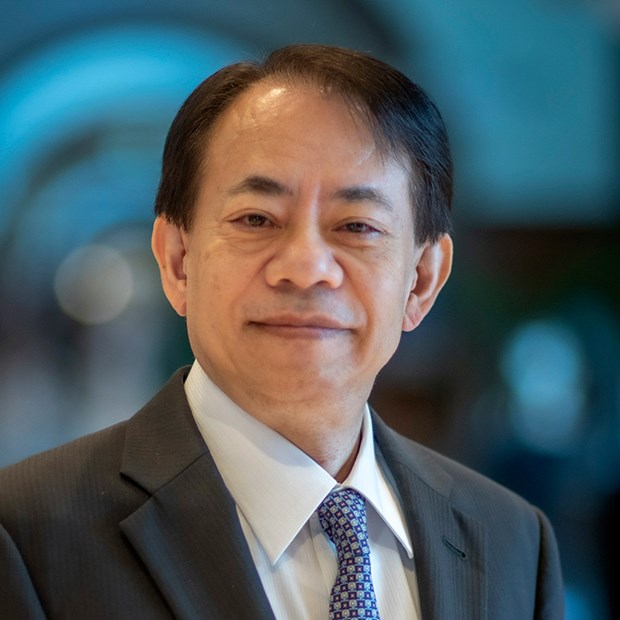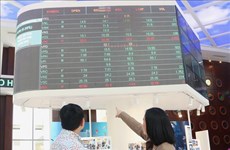Climate must drive change at development banks: ADB president
 President of the Asian Development Bank (ADB) Masatsugu Asakawa. (Photo: adb.org)
President of the Asian Development Bank (ADB) Masatsugu Asakawa. (Photo: adb.org)Hanoi (VNA) – President of the Asian Development Bank (ADB) Masatsugu Asakawa has called on development banks to make greater changes to the response to the climate crisis that the world has been facing.
“Simply placing climate action at the top of the development agenda is not enough, the climate crisis demands a dramatic shift in [the banks] mindset as development professionals,” he said.
The world is assailed by crisis, with war, disease, and economic hardship taking a terrible toll on human welfare in recent years, he said, adding that most alarming of all is the worsening impact of climate change, which threatens the very existence of countless species, including human being.
Time is running out to fix the problem, Masatsugu Asakawa said, citing the Intergovernmental Panel on Climate Change’s warning the planet’s temperature will likely rise 1.5 degrees above pre-industrial levels within the next decade, and will shoot past that critical threshold without immediate and massive emissions reductions.
The world can be entering a doom loop in which the consequences of climate change distract attention and divert resources from tackling its causes, further impeding progress as the effects worsen.
Multilateral development banks (MDBs) like the ADB can deliver critically needed financing and expertise for climate progress. However, the ADB president said that the banks cannot take bold action without making sweeping changes to their operations.
The stakes are highest in Asia and the Pacific. In addition to accounting for more than half of the world’s greenhouse-gas emissions, the region is warming faster than anywhere else and is acutely vulnerable to rising sea levels, extreme weather events, and biodiversity loss. These trends will only escalate if MDBs continue to pursue business as usual, he pointed out.
To improve the odds that humanity wins the battle against climate change, MDBs must change in three ways, Masatsugu Asakawa suggested.
For starters, some basic principles of their operations, namely the traditional country-focused approach, must be recast. The costs of climate change and the benefits of adaptation and mitigation investments extend beyond national borders, so the world needs a more regional and global perspective that leverages MDBs’ unique convening and coordinating power across political jurisdictions.
Initiatives such as the Energy Transition Mechanism, a collaborative and scalable blended-finance instrument to accelerate the retirement of coal power plants across our region, are a step in the right direction. Led by ADB, it combines concessional resources from donors, philanthropic sources, and others with market-priced funds from development-finance institutions and commercial investors.
But much more is needed. Greening trade policies and agreements can reduce the negative environmental effects of trade, including from the export of waste and plastics to developing countries. Likewise, more accurate pricing of manufacturing emissions in trade agreements can help prevent “brown” industries from relocating to poorer countries with weaker environmental regulations. Greater coordination on cross-border carbon-pricing mechanisms will also be necessary to encourage greener manufacturing and energy production.
The second change MDBs must embrace is to scale up climate investment significantly.
The ADB is reviewing its capital-adequacy framework to explore how adjustments such as redefining risk tolerance and optimising balance sheets can create more headroom for increased lending. This is an important step, he said, adding that more innovation is needed both to generate additional resources and to ensure that they incentivise bold climate action.
To this end, it is vital that MDBs expand their capacity to mobilise private investment for a broader range of climate programs, including through blended-finance mechanisms. They should lead a global expansion of innovative financing structures, spurring more cross-border and public-private collaboration on climate action.
Another way to free up additional capital for climate-related investments is to share financial risk, which could take the form of conditional guarantees from donor countries. Capital that MDBs would otherwise set aside for default risk could instead be leveraged to generate additional resources.
Finally, development banks must become more efficient and effective. Embedding global and regional development priorities at the core of the business model requires stronger climate and sectoral expertise that can be mobilised across borders. Private-sector and public-sector experts need to collaborate to identify impediments to private investment in areas like renewable energy and to design policies that could unlock downstream investment.
“The sheer scale of climate change can make us feel helpless. But if we act boldly now, we can avoid the doom loop,” he said, adding that he believes MDBs can rise to the challenge, as they have done in response to other global crises./.













